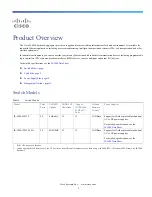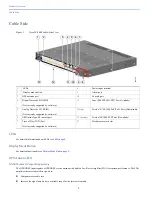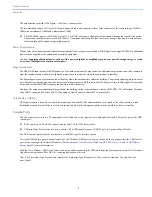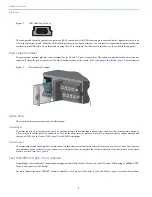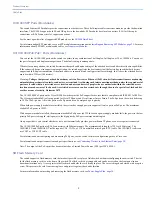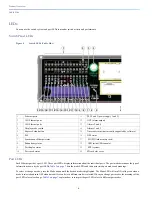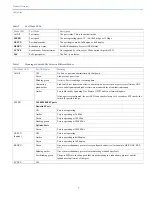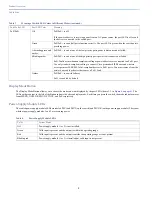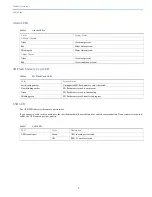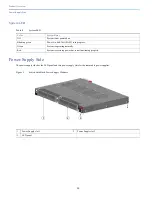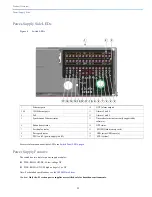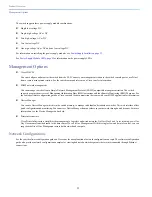
3
Product Overview
Cable Side
The amplification required is 22dB gain + cable loss + connector loss.
The recommended range of LNA gain (LNA gain minus all cable and connector losses) at the connector of the receiver input is 22dB to
30dB with a minimum of 20dB and a maximum of 35dB.
The GPS/GNSS input on the IE 5000 provides 3.3 or 5VDC (software configurable) to the antenna through the same RF connector.
The antenna should draw between 10 and 100mA. An antenna that draws less than 10mA may wrongly report and "Antenna Open"
fault even though the antenna is operating properly.
Power Requirements
When deployed in a hazardous environment the antenna shall only use power provided by the RF input from a single IE 5000. No additional
power may be supplied to the antenna and associated equipment.
Caution:
Supplying additional power, such as with a powered splitter or amplified repeater, may provide enough energy to create
an arc that could ignite the explosive atmosphere.
Surge requirement:
The GPS/GNSS input has built-in ESD protection. If an outdoor antenna is being connected, additional surge protection will be required to
meet the regulations and standards for lightning protection in the countries where the end-product is installed.
The lightning protection must be mounted at the place where the antenna cable enters the building. The primary lightning protection must
be certified for conducting all potentially dangerous electrical energy to PE (Protective Earth). Surge arrestors should support DC-pass and
be suitable for the GPS/GNSS frequency range with low RF attenuation.
Caution:
The antenna terminal should be earthed at the building entrance in accordance with the ANSI/NFPA 70, the National Electrical
Code (NEC), in particular Section 820.93, Grounding of Outer Conductive Shield of a Coaxial Cable.
Antenna Sky visibility:
GPS signals require a direct line of sight between antenna and satellite. The antenna should see as much of the sky as possible. Fixed
installations require four satellites in view for an initial time fix, while subsequent updates may be possible with fewer satellites.
Console Ports
You can connect the switch to a PC running Microsoft Windows or to a terminal server through either the RJ-45 console port or the USB
console port.
RJ-45 console port. The RJ-45 connection uses an RJ-45-to-DB-9 female cable.
USB mini-Type B console port (5-pin connector). The USB connection uses a USB Type A-to-5-pin mini-Type B cable.
The USB console interface speeds are the same as the RJ-45 console interface speeds.
To use the USB console port, you must install the Cisco Windows USB device driver on the device that is connected to the USB console
port (device running with Microsoft Windows). See
Installing the Cisco Microsoft Windows XP, 2000, Vista, 7, 8, and 10 USB Device
Driver, page 64
for more information.
With the Cisco Windows USB device driver, connecting and disconnecting the USB cable from the console port does not affect Windows
HyperTerminal operations. Mac OS X or Linux require no special drivers.
Note:
The 5-pin mini-Type B connectors resemble the 4-pin mini-Type B connectors. They are not compatible. Use only the 5-pin
mini-Type B.

